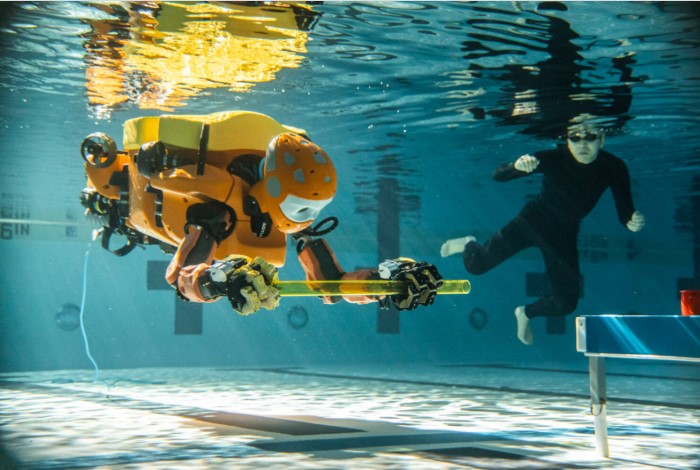If you've ever tried to carry a bucket of water somewhere, you'll know this fact.
Water is heavy. Surprisingly so. A single litre of water weighs about a kilogram (2.2 pounds). A cubic metre of water? That weighs 1000 kilograms, or one metric tonne!
That is why when it comes to diving in the open sea, every metre that you go down quickly increases the pressure on your body. In short, even with scuba gear for breathing, diving for humans is challenging, even dangerous.
The sad problem with that? There are so many cool things to explore under the sea. Entire unique ecosystems! Amazing geological formations! And shipwrecks and lost planes and other human artifacts that reach back centuries.
Yes, we have remote-controlled submersible vehicles with cameras that are built to withstand the pressure of the deep sea. But it's not the same as actually being there and touching these things for yourself.
Enter OceanOneK. This new humanoid diving robot is designed to give humans the chance to experience the thrill of being there. As in right there, 500 metres under the sea. And all from the comfort of a control room on the surface. What makes it so different to other submersible bots? Let's check it out!
Like a human

Running tests on the OceanOneK at the pool at Stanford University. (Andrew Brodhead)
When the engineers at Stanford started working on their first diving robot (OceanOne, which first dove in 2016), they knew what they wanted to do. There were already submersibles that allowed people to explore the deep sea. But even when they had cameras and arms for grasping objects, they weren't focused on trying to replicate (or reproduce) the sensations of actually being down there.
So these engineers gave their bot humanoid features on its top half. It has a head and two eyes, for vision very similar to a human's. It also has a torso (chest) and two arms with hands. Even though the lower half of the bot is equipped with propellers and not legs (propellers are much better for getting around down there!), the rest of the robot looks like a person!
And above all, it is designed to give its operator an idea of how it actually 'feels' to be underwater. What does this mean?
Meet the resistance
Most remotely controlled submersibles are controlled by some kind of joystick or keypad, like a video game. Press forward to move forward, this button makes the camera look around, and so on!
But the OceanOne series has controls that are specially designed to duplicate the sensations of moving and holding things underwater.
So if the operator moves the robot's arms at 200 metres down, they will feel how hard it is to push through all that water (hint: it's pretty tough!). And if the robot grasps an object underwater—from coral to a jar recovered from a sunken ship—the operator will be able to feel the texture of that object.
One kilometre down!
The original OceanOne was able to go down around 200 metres (656 feet). That's far beyond what a person can withstand, but it still left many things out of reach.
The brand new OceanOneK, however, can go down one full kilometres (1,000 metres or 0.62 miles). K is a short form for 'kilometre'. Already, it has been used to explore several shipwrecks and crashed planes, including a Roman wreck that is 852 metres (half a mile) down.
This sort of innovation will make so many tasks that were once far out of reach now within our grasp!
To learn more about OceanOneK and this entire program at Stanford, watch the video below.
 The incredible OceanOneK on a mission to investigate a plane. This was at 67 m (200 feet) deep, but it can go much deeper than that! (Frederic Osada/DRASSM/Stanford)
The incredible OceanOneK on a mission to investigate a plane. This was at 67 m (200 feet) deep, but it can go much deeper than that! (Frederic Osada/DRASSM/Stanford)









